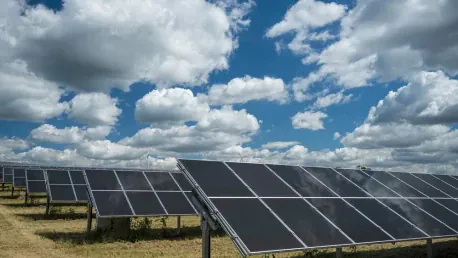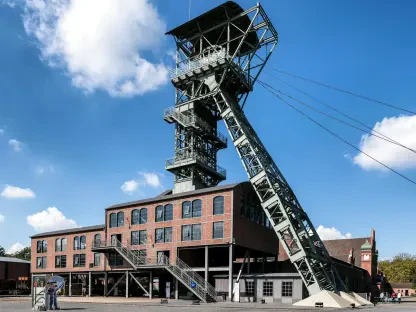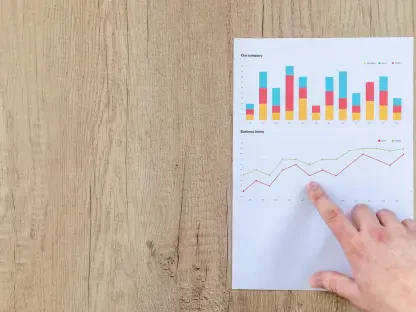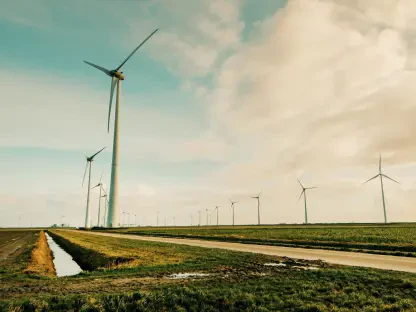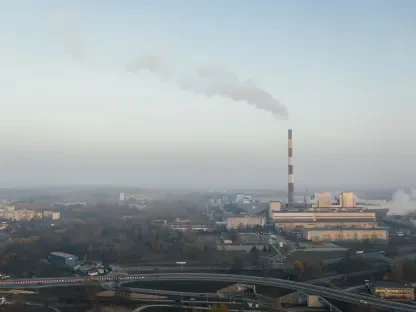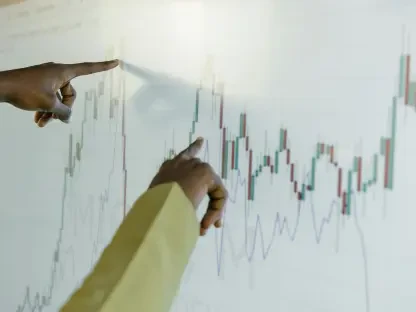Christopher Hailstone has extensive experience with energy management, renewable energy, and electricity delivery. He is our Utilities expert and provides valuable insights on grid reliability and security.
Can you tell us more about Photosol’s decision to establish an office in Romania?
Photosol’s decision to establish an office in Romania is primarily driven by the country’s dynamic market, which is well-aligned with both the European Union’s economic context and sustainability values. Romania offers an economic environment that is conducive to business development and expansion, making it an attractive location for Photosol’s operations, not only in Romania but also in Bulgaria and the Western Balkans.
What factors make Romania an attractive market for Photosol’s expansion?
Romania has several appealing factors for Photosol’s expansion. These include a robust economic environment that supports business development, substantial growth potential in the renewable energy sector, and alignment with the EU’s sustainability objectives. The country’s commitment to phasing out coal and Russian gas further enhances its attractiveness.
How does Romania’s economic environment support Photosol’s business development?
Romania’s economic environment is supportive of Photosol’s business development due to its stability and growth potential in the renewable energy sector. This includes a mature commercial PPA market and strong interconnections, which are essential for the successful implementation and operation of solar power projects.
Can you elaborate on Romania’s sustainability values aligned with the European Union?
Romania’s sustainability values are aligned with the EU’s goals of reducing carbon emissions and increasing the share of renewable energy in the energy mix. The country’s ambitious renewables target and government support mechanisms, such as the contract-for-difference (CfD) state support mechanism, also align with the EU’s sustainability agenda.
You mentioned a targeted portfolio of 1.2 GW in solar power projects. Can you provide a breakdown of how this will be distributed across Romania, Bulgaria, and the Western Balkans?
Our targeted portfolio of 1.2 GW in solar power projects will be distributed across the region, with 500 MW targeted specifically for Romania. The remaining capacity will be allocated to projects in Bulgaria and the Western Balkans, with exact figures to be determined based on market conditions and project opportunities.
What are your immediate plans for solar power projects in Romania?
Our immediate plans for solar power projects in Romania include developing ground-mounted solar power plants. We are targeting 500 MW in Romania, with a clear timeline to achieve this goal by 2030. These initial projects will lay the groundwork for future expansions and more innovative approaches like agrivoltaics.
Photosol plans to start with ground-mounted solar facilities before moving to agrivoltaics. Can you explain why this approach has been chosen?
Starting with ground-mounted solar facilities allows us to quickly deploy and scale up our renewable energy capacity. This approach is more straightforward and less complex than agrivoltaics, providing an immediate impact in terms of energy production. Once we establish a solid base, we can explore the additional benefits of agrivoltaics, such as dual land use for agriculture and energy production.
What are the anticipated benefits of starting with ground-mounted facilities?
The primary benefits include faster deployment, reduced complexity, and the ability to generate significant amounts of solar energy in a shorter timeframe. Ground-mounted facilities also tend to have lower initial costs and provide an easier pathway to enter and establish a presence in new markets.
What factors will influence the shift to agrivoltaics?
The shift to agrivoltaics will be influenced by the success of our initial ground-mounted projects, market demand, regulatory support, and the potential for collaboration with local agricultural sectors. It’s a strategy that allows us to innovate and optimize land use while supporting the agricultural economy.
How does Photosol plan to finance its solar projects in Romania?
Financing will be secured through a combination of commercial power purchase agreements (PPAs) and other mechanisms. PPAs will play a crucial role in providing a stable revenue stream. Additionally, we are exploring various financing options, including partnerships with commercial banks and investment funds.
What role do commercial power purchase agreements (PPAs) play in securing revenue?
PPAs are essential because they provide long-term agreements with guaranteed payment for the electricity generated, thus ensuring a stable revenue stream. This stability is vital for attracting investment and securing financing for large-scale projects.
Are there any other financing mechanisms being considered?
Yes, in addition to PPAs, we are considering other financing mechanisms such as grants and loans from government programs, as well as investment from private equity and green financing initiatives. These options will help diversify our funding sources and mitigate risks.
You pointed out several advantages that Romania offers, including the phaseout of coal and Russian gas. How important are these factors in Photosol’s decision-making process?
The phaseout of coal and Russian gas is very significant as it creates a favorable environment for renewable energy projects, presenting opportunities for replacing fossil fuels with clean energy. This transition aligns with Photosol’s mission and long-term strategic goals.
Romania has an ambitious renewables target of 8.2 GW by 2030. How does Photosol plan to contribute to achieving this goal?
Photosol plans to contribute by developing substantial solar power capacity, targeting an initial 500 MW with the potential for further expansions. Our projects will be supported by the contract-for-difference (CfD) state support mechanism, ensuring competitive pricing and financial viability.
Can you discuss the role of the contract-for-difference (CfD) state support mechanism?
The CfD mechanism is crucial as it guarantees a stable price for the electricity generated, reducing market risk and making projects more financially attractive. It serves as a hedge against price volatility and ensures that renewable energy producers are adequately compensated.
What challenges do you foresee in Romania’s market, particularly regarding financing costs in the local currency?
One of the main challenges is the high financing costs in the local currency, which can impact the overall cost of projects. Additionally, there might be regulatory hurdles and competition for limited grid connection capacity. Managing these issues will require careful financial planning and risk management.
Can you provide more information about Photosol’s global portfolio and current projects under construction?
Photosol has a diverse global portfolio with operational and under-construction solar power plants totaling 992 MW in peak capacity. Our projects are spread across countries such as Italy, Spain, and Poland. These initiatives complement our efforts in Romania and the Balkans, aiming to achieve over 5 GW by 2030.
How do your projects in Italy, Spain, and Poland complement your initiatives in Romania and the Balkans?
Projects in Italy, Spain, and Poland provide valuable experience and lessons that can be applied to our initiatives in Romania and the Balkans. They also help to diversify our geographic and regulatory exposure, ensuring a balanced and sustainable portfolio.
What are some of the key projects in your pipeline set for completion by 2030?
Key projects include large-scale facilities in France, major installations in Italy and Spain, and new ventures in Poland. These projects are crucial to achieving our target of 5 GW by 2030 and will significantly boost our renewable energy capacity and market presence.
Looking ahead, what are Photosol’s long-term goals in the Balkans region?
In the long term, we aim to be a leading renewable energy producer in the Balkans, contributing substantially to the region’s transition to clean energy. We plan to expand our solar power capacity, explore innovative technologies like agrivoltaics, and forge strategic partnerships to drive sustainable growth.
How important are partnerships and collaborations for Photosol’s success in Romania and the surrounding countries?
Partnerships and collaborations are vital. They allow us to leverage local expertise, share risks, and tap into new opportunities. Working with local governments, businesses, and communities ensures that our projects are well-integrated and successful.
What would you say is the most innovative aspect of Photosol’s approach to photovoltaic plants?
The most innovative aspect is our phased approach, starting with ground-mounted facilities and transitioning to agrivoltaics. This strategy allows us to establish a solid foundation while exploring dual land-use technologies that enhance land productivity and sustainability.
How does Photosol ensure its projects align with sustainability and environmental values?
We prioritize sustainability by adhering to strict environmental standards, incorporating innovative technologies, and engaging with local communities. Our projects are designed to minimize environmental impact, support biodiversity, and promote long-term ecological balance.
What is your forecast for the solar power market in the Balkans over the next decade?
The solar power market in the Balkans is poised for substantial growth over the next decade. With supportive policies, declining technology costs, and increasing investor interest, I foresee a significant expansion in solar capacity, making the Balkans a key region for renewable energy development.
